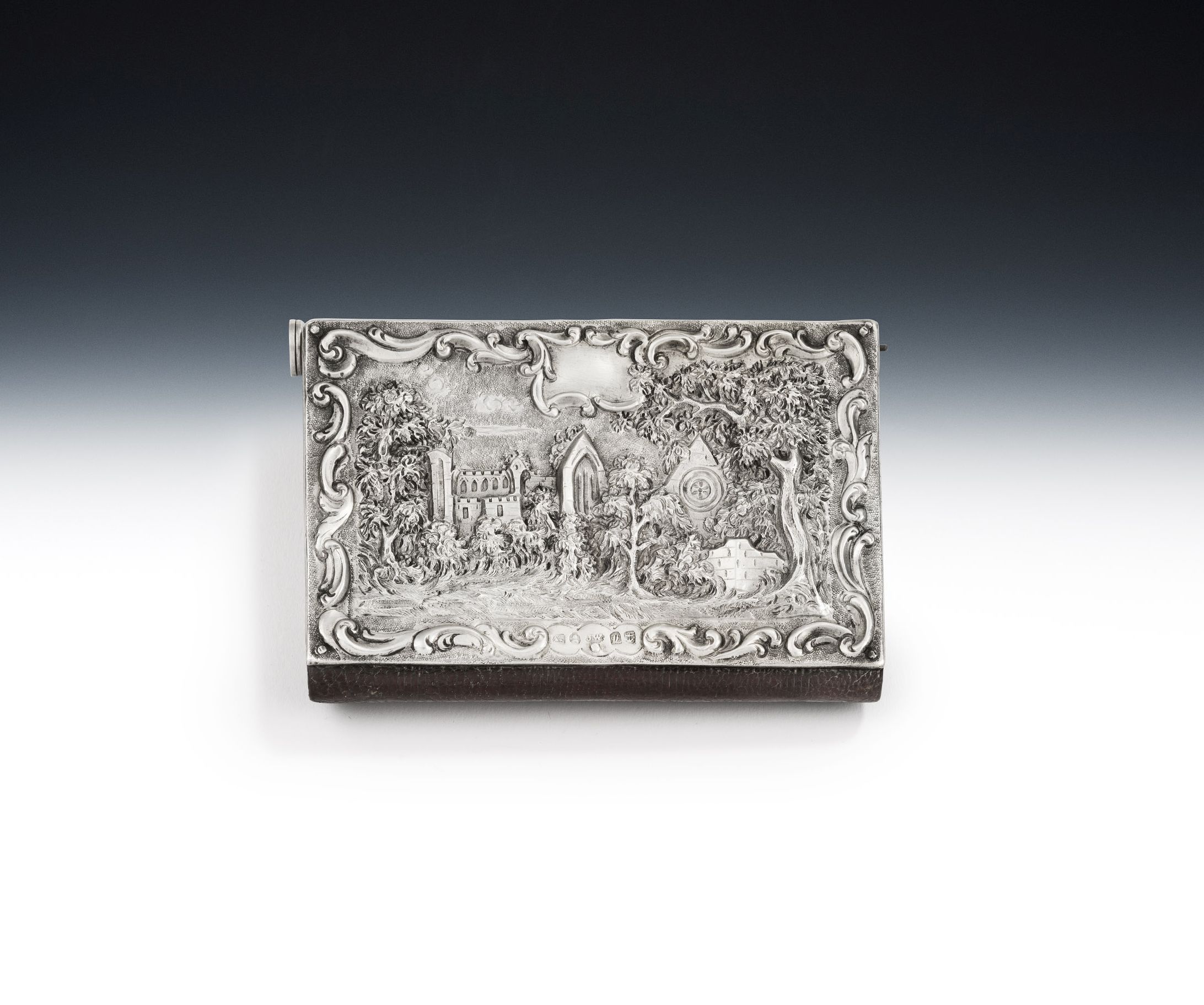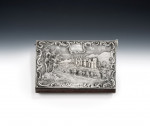- Home
- British Silver Post 1830
- A very rare William IV Castle top Aide Memoire made in Birmingham in 1834 by Joseph Willmore.
A very rare William IV Castle top Aide Memoire made in Birmingham in 1834 by Joseph Willmore.
A very rare William IV Castle top Aide Memoire made in Birmingham in 1834 by Joseph Willmore.
375023
The Aide Memoire has two rectangular silver panels chased and embossed with two rare landscaped scenes inside scroll work borders, one depicting a rare view of Abbotsford House ( the home of Sir Walter Scott) from across the River Tweed and the other the ruins of Dryburgh Abbey, between Melrose and Kelso in Scotland. Both scenes are extremely detailed and in excellent crisp condition, each being surmounted by a shaped cartouche, one engraved "Charles". The memoire opens up to reveal a green silk lined interior, with three pages. A contemporary silver propelling pencil is held within three leather retaining loops and the end is set with a hardstone engraved with the owners Crest. This is a particularly scarce item.
As discussed, this depicts a very rare view of Abbotsford House, in relief, on the cover. This view is of the house from across the River Tweed. Sir Walter Scott was fond of this view of the house from the Galashiels Road on the far side of the Tweed and used to show it to his guests. To the right of the house, a smaller building can be seen, closer to the river, which might be assumed to be a boat house, but was infact the stables. It is known that Taylor & Perry and Joseph Willmore were producing this view on Vinaigrettes in 1834/35 as seen on the engraving by Edward Finden, published in 1829.
The other view is of Dryburgh Abbey in high relief. Dryburgh is a ruined abbey beside the River Tweed between Melrose and Kelso. It is smaller than the nearby abbeys at Jedburgh, Kelso and Melrose. The abbey was established by the Premonstratensian Order in 1150. Sir Walter Scott was buried here on 26th September, 1832, beside some of his ancestors and his wife, who had pre-deceased him in 1826.
Length: 3.25 inches, 8.13 cm.
Width: 2.2 inches, 5.5 cm
Thank you for your enquiry.
We will get back to you soon.
Please create wishlist to add this item to
RELATED ITEMS
























